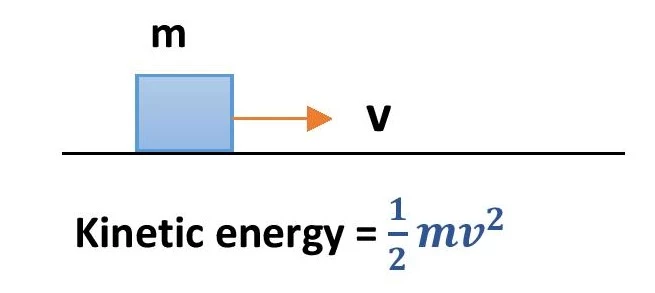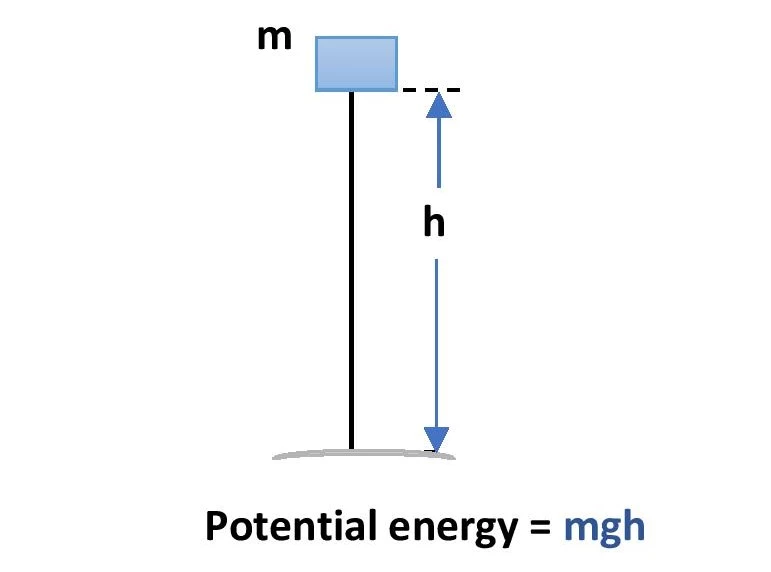We already discussed mechanical energy in the previous article. There are two types of mechanical energy – Kinetic energy and potential energy. Kinetic energy also has two types – translational kinetic energy and rotational kinetic energy. We already have an article on rotational kinetic energy. In this article, I’m going to share the basic difference between kinetic and potential energy on an object. This explanation will be easy to understand even for a kid.
What is the Kinetic energy of an object?

The mechanical energy of an object due to its motion is the kinetic energy of the object. The kinetic energy of an object is defined as the ability to do work gained by the object due to its motion. An object possesses kinetic energy due to its motion only. There is no other way to generate kinetic energy in a body. Suppose an object of mass m is moving with a velocity v, then the kinetic energy of the object will be \small {\color{Blue} K.E. = \frac{1}{2}mv^{2}}.
What is the Potential energy of an object?

The potential energy of an object is due to its position above ground level. It is the ability to do work of an object due to its position above the ground. Thus, a body will have potential energy only if it is raised to some height above the ground. If an object of mass m is positioned at a height h above the ground, then its potential energy will be P.E. = mgh.
Similarities between kinetic energy and potential energy
The comparison between kinetic energy and potential energy includes both the similarities and differences between them. In this section, we are to discuss the similarities between these types of energies.
- Both K.E and P.E have the same units and dimension as that mechanical energy.
- These two types of energies are directly proportional to the mass of the object. One can see this thing from their equations.
- The Kinetic energy of an object can be converted into its potential energy and vice-versa.
What are the differences between kinetic and potential energy?
Now, what are the differences between the potential energy and kinetic energy of an object? See the differences in tabular form.
| SL No. | Kinetic energy | Potential energy |
| 1 | The Kinetic energy arises due to the motion of the object. | The Potential energy arises due to the position of the object above ground level. |
| 2 | Kinetic energy can be transferred from one object to another object by the process of collision. | Potential energy is not transferrable between objects. |
| 3 | The mass and the velocity of the object are the variables to determine the kinetic energy of the object. | The mass and the height of the object are the variables to determine the potential energy of the object. |
| 4 | Example: Suppose you are participating in a race. When you are running, you will have kinetic energy. | Example: Suppose you are jumping during performing an exercise. When you jump to a height you will have some potential energy. |
Summary
- The sum of Kinetic energy and Potential energy gives total energy.
- Kinetic energy is the ability to work of an object due to its motion.
- Potential energy is the ability to work of an object due to its position above the ground.
- Kinetic and Potential energies are exchangeable.
This is all from this article on the difference between K.E. and P.E. If you still have any doubts on this topic you can ask me in the comment section.
Thank you!
Related posts:
Comments are closed.